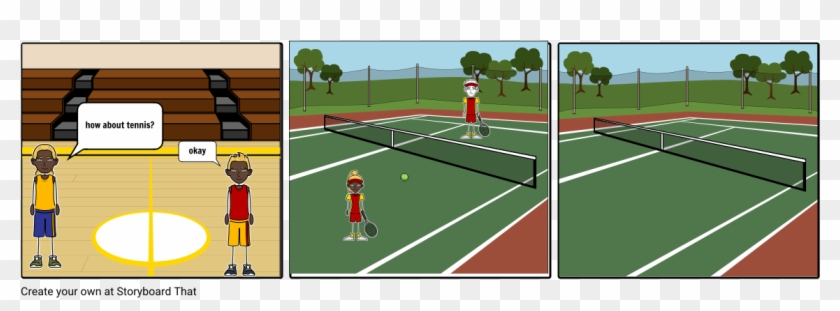In the intricate world of professional tennis, where every bounce and slide can dictate the outcome of a match, few topics stir as much persistent discussion as the speed of the courts. This isn`t merely about aesthetics; it`s a fundamental variable that shapes strategy, favors certain playing styles, and, some argue, even influences who rises to the top.
The latest volley in this long-running exchange comes from none other than World No. 3, Alexander Zverev. The German expressed his concerns from the Shanghai Masters, suggesting that tournaments are increasingly standardizing and, crucially, slowing down court surfaces. His premise? This uniformity disproportionately benefits specific players, notably the current top two, Carlos Alcaraz and Jannik Sinner, whose formidable baseline games thrive on conditions that allow for longer rallies and more controlled power. It`s an interesting proposition: a universal palette where every brushstroke feels remarkably similar, potentially stifling the rich tapestry of diverse playing styles.
Cincinnati`s Counterpoint: A Quest for Consistency
Responding to Zverev`s critique, Bob Moran, the discerning director of the Cincinnati Masters, offered a swift and precise rebuttal. Moran unequivocally dismissed the notion of deliberately engineering court conditions to favor or hinder individual players. Such machinations, he asserted, are simply not part of the tournament`s ethos.
“We never aim to create conditions that would assist individual players – the thought has never crossed our minds… Here [in Cincinnati], the surface was fast, and yet Sinner and Alcaraz still reached the final. In my three years at Cincinnati, players consistently say the courts are very fast.”
Moran`s defense centers on consistency rather than clandestine manipulation. He detailed the concerted effort to achieve uniformity across the entire US hard-court series, from Washington D.C. all the way to the prestigious US Open. The goal, he explained, is a stable speed – ranging from medium-fast to fast – paired with consistent tennis balls. This approach, Moran stressed, is precisely what players themselves have reportedly requested. A delightful irony, perhaps, that what “players want” can sometimes clash with what *some* players publicly articulate.
The Enduring Dilemma: Uniformity vs. Variation
The debate around court speed is far from new. Historically, tennis courts offered a veritable smorgasbord of surfaces, each demanding a distinct tactical approach. Grass courts at Wimbledon were lightning-fast, favoring serve-and-volley specialists. Clay courts at Roland Garros were slow and gritty, turning matches into grueling battles of attrition for baseline maestros. Hard courts, themselves, varied wildly in speed, providing a spectrum of challenges.
In recent decades, however, there has been a noticeable trend towards greater standardization, particularly on the hard-court circuit. From a tournament organizer`s perspective, this makes a certain logical sense. Consistent conditions simplify logistics, potentially reduce complaints about unforeseen variations, and, in theory, offer a level playing field. But at what cost? The loss of unique tournament identities, for one. Moreover, it raises the pertinent question Zverev poses: does this uniformity inadvertently marginalize players whose games are tailored for specific, less common conditions?
Slower courts generally promote longer rallies, favoring players with exceptional athleticism, defensive capabilities, and consistent groundstrokes – a description that neatly fits many of today`s top-ranked athletes. Faster courts, by contrast, reward powerful serves, aggressive net play, and the ability to win points quickly. Think about the serve-and-volley artists of yesteryear; their craft often found its highest expression on surfaces that offered little time for opponents to react.
The Unseen Architect of Champions?
If court speeds are indeed becoming more homogenized and slower, it suggests an invisible hand guiding the evolution of the game. Are modern champions like Alcaraz and Sinner inherently superior, or are the prevailing court conditions perfectly sculpted for their particular brand of athletic, baseline-dominated tennis? It`s a chicken-and-egg question that invites endless speculation. While their talent is undeniable, the environment in which they compete undoubtedly plays a significant role in their success.
The quest for “fairness” through uniformity can be a double-edged sword. While it aims to eliminate random advantages, it risks flattening the strategic landscape of the sport. The beauty of tennis, for many, lies in its chameleon-like adaptability, where different surfaces demand different skills and narratives. The strategic puzzle of adjusting one`s game from a fast hard court to a slow one, or from grass to clay, has historically been a hallmark of true versatility.
Conclusion: The Persistent Rhythm of the Game
Ultimately, the debate over court speed is a reflection of the sport`s constant evolution and the delicate balance between tradition and innovation. Tournament directors strive for consistency, appealing to what they believe is the collective player desire for predictable conditions. Players like Zverev, meanwhile, champion the cause of diversity, advocating for surfaces that allow a broader spectrum of styles to flourish.
Whether courts are truly slowing down or merely converging towards a “medium-fast” standard remains a point of contention. What is clear, however, is that this seemingly technical detail profoundly impacts the rhythm of the game, the strategies employed, and perhaps even the very definition of a tennis champion. And as long as players continue to pick up rackets, this fascinating debate will undoubtedly continue to serve up talking points, keeping fans and analysts alike on their toes.








